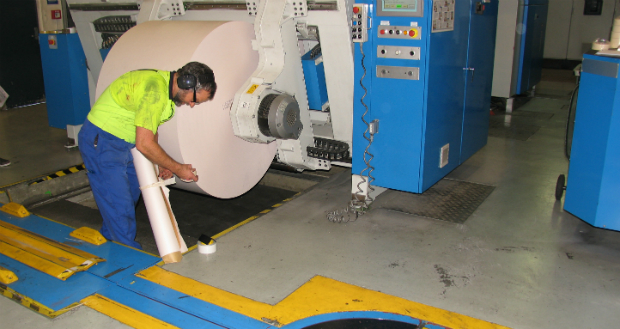Covid-19 has returned to Auckland but print, signage, and packaging companies can continue operating.
Ruth Cobb, chief executive at PrintNZ, says, “Ironically, last night I was summarising the results of the second survey we conducted and unsurprisingly one of the biggest concerns was a second wave of Covid. I also wrote an article for New Zealand Printer on Monday reminding everyone of the importance of maintaining safe hygiene practices and that Level One means being prepared. I trust that everyone in Auckland was prepared because here we are back at Level Three from noon today, with the rest of the country right behind us at Level Two.”
All printing and related companies can remain open at both Level Three and Level Two. PrintNZ is reminding everyone what those Levels mean for businesses and employees and what they need to have in place to continue operating with a focus on ‘safe’ business. PrintNZ has an updated copy of the Level Three protocols, signed off by Worksafe.
Cobb says, “It is vital that everyone takes this seriously – we do not want to provide any opportunities for Covid-19 to get into one of our workplaces or our homes. Follow the rules and hopefully this will be short and sweet.:
Auckland – Level Three
Each business must have in place a plan to ensure that they can keep their workers safe and minimise any chance of transmission of Covid-19 in the workplace and beyond.
You should all have Level Three health and safety protocols provided in April that were endorsed by the chief executive of Worksafe. You need to ensure these are reintroduced. You can download a copy from PrintNZ.
All staff/contractors should be reminded of what is required to keep your business open:
- Work from home if possible
- Vulnerable workers should remain at home
- Increase hygiene procedures – frequency of cleaning, regular washing of hands, cough into elbow
- Stay home if you are sick
- Maintain physical distancing of two metres
- Have contact tracing in place for staff and contractors
- No visitors unless they are providing an essential service and correspondingly you cannot visit your clients
- Ensure you engage with your staff and contractors and monitor their wellbeing
- Contact-less engagement for deliveries/despatch
- Monitor to ensure protocols are being adhered to
- Nothing you put in place for Covid-19 should compromise any existing health and safety protocols that you have in the workplace.
Outside of Auckland – Level Two
For everyone else, you step up to Level Two, but you should be putting in place many of the same workplace practices as detailed above for Level Three:
- Increase hygiene procedures – frequency of cleaning, regular washing of hands, cough into elbow
- Stay home if you are sick
- Maintain physical distancing of one metre
- Have contact tracing in place for staff and contractors
- Vulnerable workers are able to work if they believe it is safe to do so
- Ensure you engage with your staff and contractors and monitor their wellbeing
- Contact-less engagement for deliveries/despatch
- Monitor to ensure protocols are being adhered to
- These health and safety practices are just as important at Level 2 as people have access to much wider groups of people outside the workplace, so you need to ensure your workplace bubble is not compromised.
At Level Two you can have customers/suppliers come in to your premises, but you must have contract tracing in place for them and you must continue to keep everyone at least a metre apart. Likewise, those of you with sales reps visiting customers will need to ensure they understand the rules and can trace their movements.
With the government NZ Covid Tracer app now widely available and in use this may be the most straightforward way to cater for visitors to your premises. Make sure you have posters displayed at all entry points.
Please contact PrintNZ if you have any questions
Previous articles have covered safety protocols


